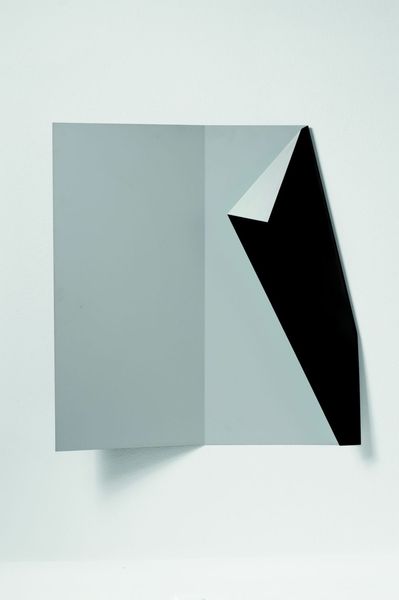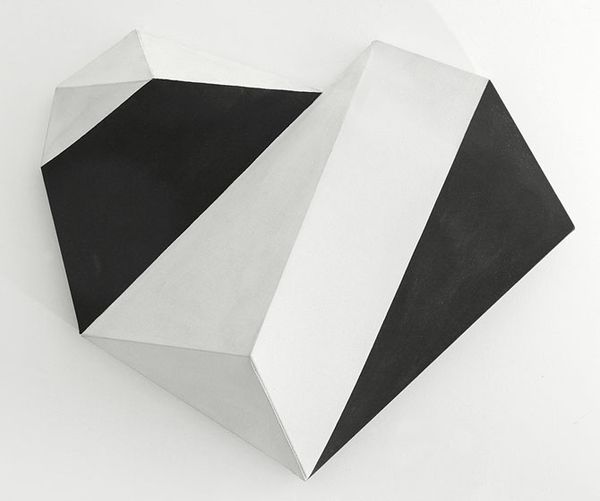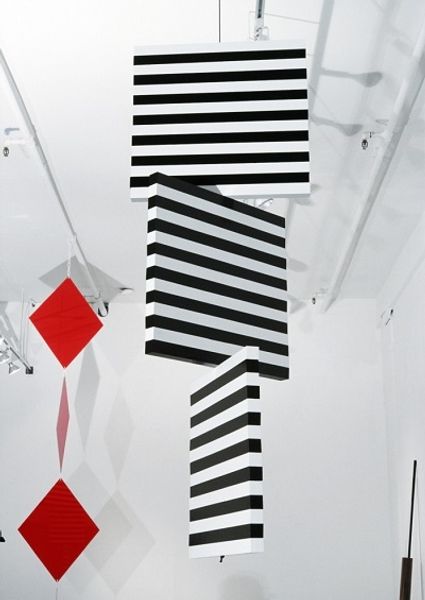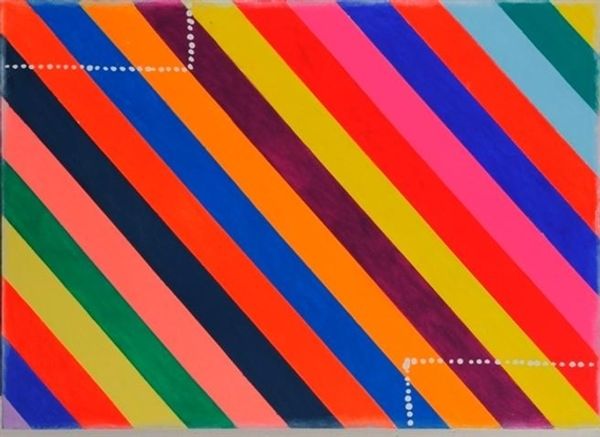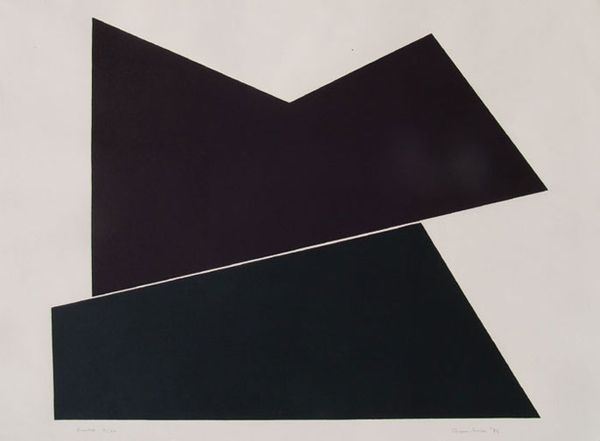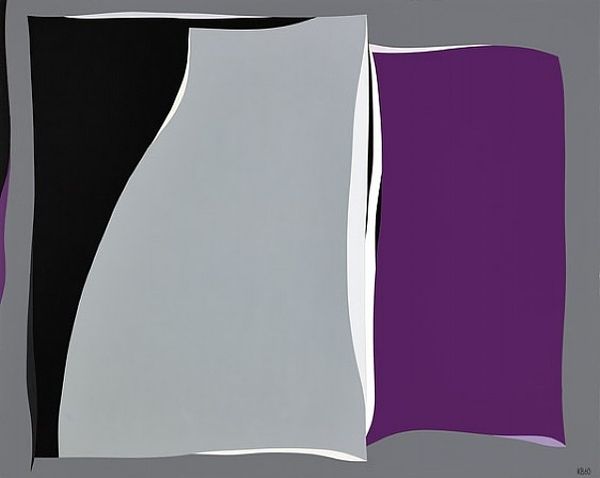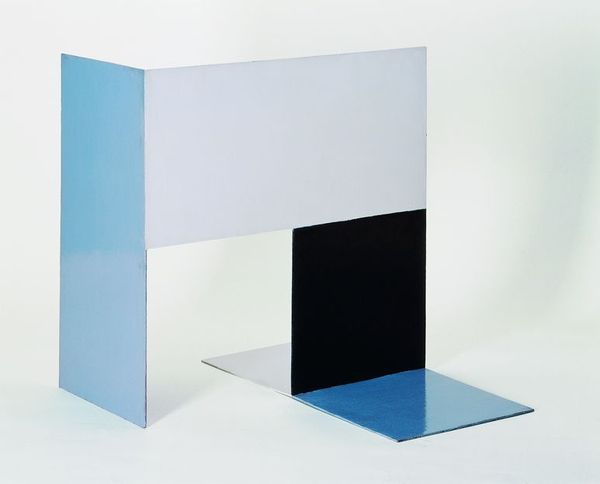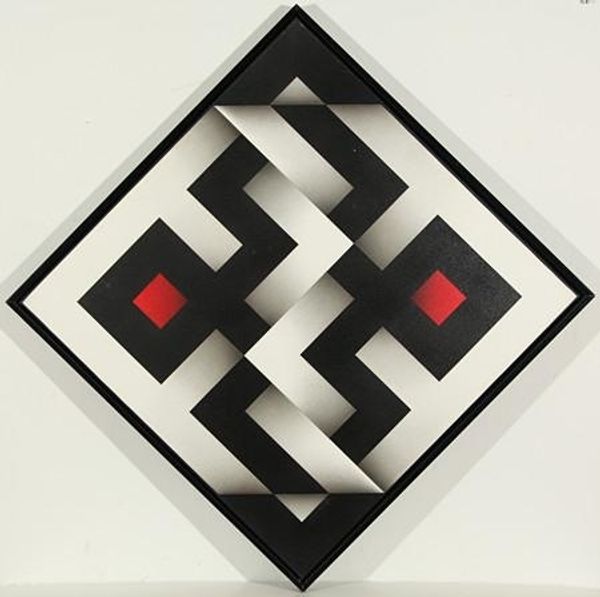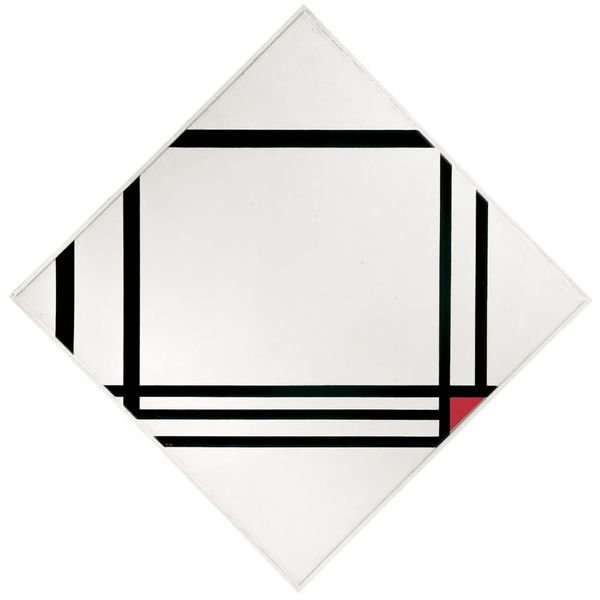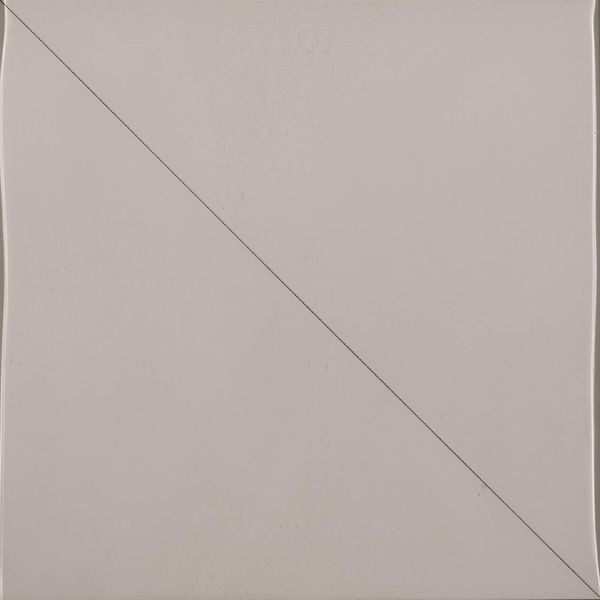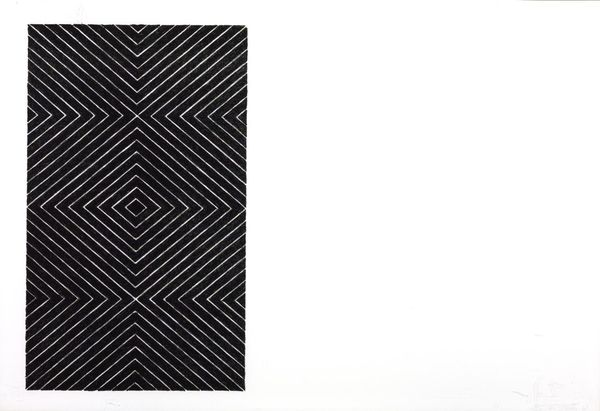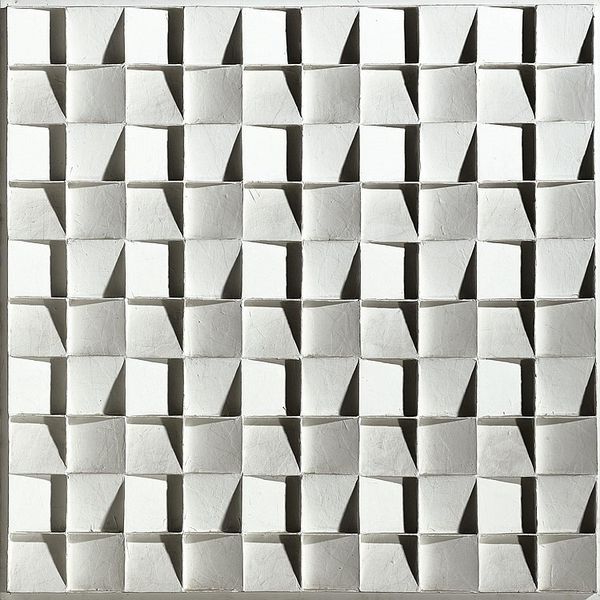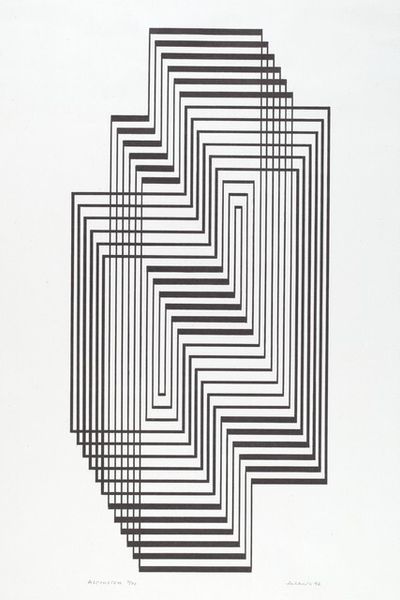
Copyright: Omar Rayo,Fair Use
Editor: We're looking at "Untitled," a monochrome sculpture from 2009 by Omar Rayo. It features sharp geometric forms and striking black and white contrasts. I'm struck by its industrial feel. What material elements stand out to you? Curator: It's fascinating to consider how Rayo transforms what could be read as simply geometric abstraction into a comment on production. I see the labor, the sharp cuts, the joining of material that mimics industrial processes. Think about how the 'stripe' component impacts on the negative space... Editor: How does the context of its production influence its meaning? Curator: Well, think about Rayo working during a time of increased industrialization in Latin America. The sharp lines and monochrome palette mirror the efficiency and aesthetic of modern manufacturing. How does this challenge the traditional boundaries between "high art" and "craft"? Editor: I see what you mean. By embracing the look and feel of industrial processes, he's elevating those traditionally devalued methods to a form of high art. Curator: Precisely. The piece then, can be seen as a social commentary. What statements is Rayo making through his construction techniques? Editor: Maybe he's highlighting the value of labor itself, pointing out that the construction methods are equally important as the final art object. The art itself becomes an artifact, of sorts. Curator: Exactly! By focusing on process and materiality, Rayo forces us to consider art as more than just aesthetics – it's also about labor, material, and ultimately consumption. Editor: I hadn't considered it that way before. It is fascinating how this "Untitled" sculpture invites us to investigate materiality and the labor interwoven in it, not just as visual forms, but as integral components. Curator: Absolutely. Art becomes a lens through which we can critically examine our social and industrial landscapes.
Comments
No comments
Be the first to comment and join the conversation on the ultimate creative platform.
